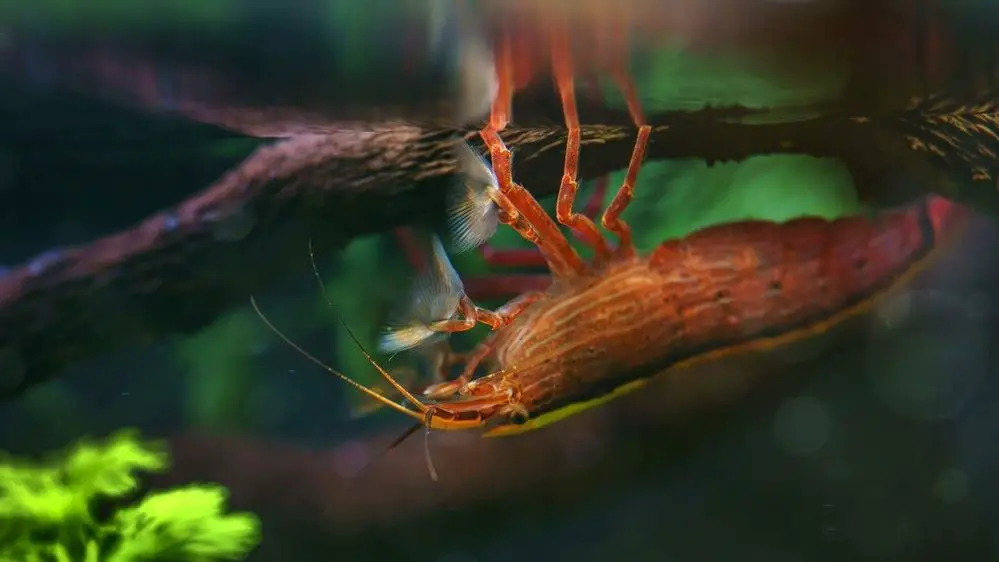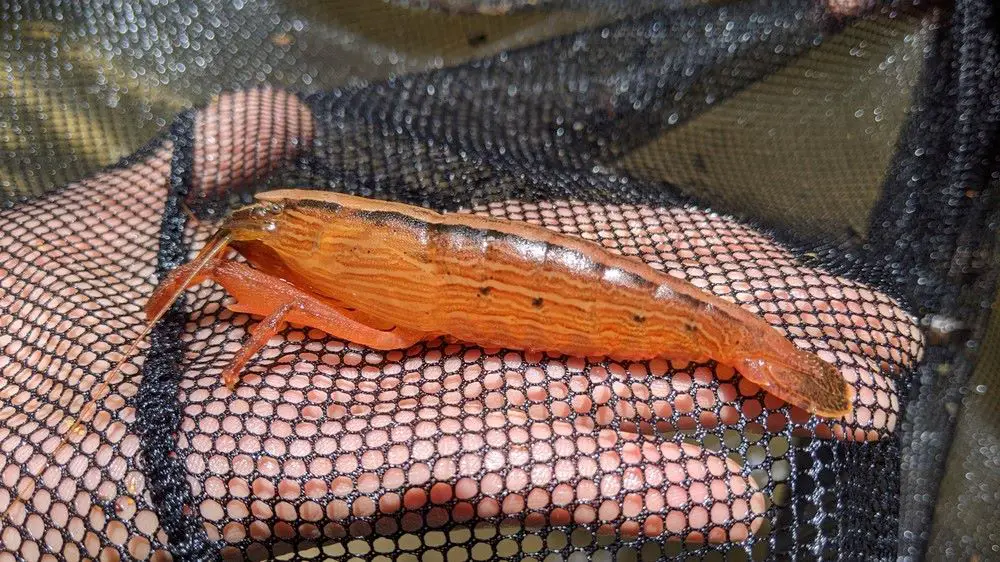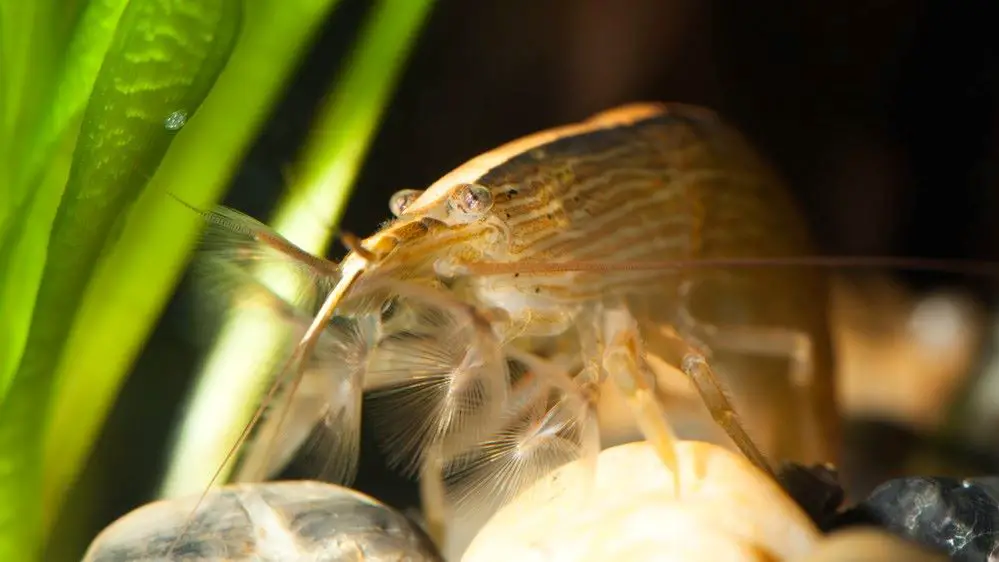Has the unique charm of Bamboo shrimp ever drawn you in, prompting questions about how to provide the best care for these intriguing creatures?You’re not alone. Many aquarium enthusiasts are drawn to these shrimp for their distinctive filter-feeding habits and peaceful demeanor.
However, like any pet, Bamboo shrimp require specific care to thrive, and understanding their needs can sometimes feel like a puzzle.
to thrive, and understanding their needs can sometimes feel like a puzzle.
Bamboo shrimp are relatively easy to care for, provided they are kept in an established tank with a good water current, a balanced pH, and a temperature between 72-82F. They filter feed, so they need a good flow of water to catch their food. If you see them picking food off the substrate, it’s a sign that they’re not getting enough food from the water. They are peaceful creatures and can coexist with smaller shrimp and other peaceful tank mates.
My Journey with Bamboo Shrimp
I remember the first time I brought home a Bamboo shrimp. I was captivated by their unique filter-feeding habits and the way they added a touch of the exotic to my aquarium. But as time went on, I realized that these fascinating creatures required a bit more care than I had initially thought.
One of the first challenges I faced was ensuring they had enough food. Bamboo shrimp are filter feeders, meaning they catch their food from the water current. I noticed one of my shrimp started picking food off the gravel, a clear sign that it wasn’t getting enough food from the water. I had to adjust the water flow and supplement their diet with powdered food to ensure they were getting enough nutrients.
What are the Ideal Water Conditions for Bamboo Shrimp?
Creating the perfect environment for your Bamboo shrimp begins with understanding their natural habitat. Originating from Southeast Asia, these shrimp are accustomed to warm, slightly acidic to neutral waters. Therefore, maintaining a temperature between 72-82F (22-28C) in your aquarium is crucial for their comfort and health.
The pH level of the water also plays a significant role in the well-being of your Bamboo shrimp. These creatures thrive in a pH range of 6.5 to 7.5, which is slightly acidic to neutral. Regularly testing the water’s pH level and making necessary adjustments can help ensure your shrimp’s environment remains stable and safe.
Another important aspect is the water current. Bamboo shrimp are filter feeders, meaning they catch their food from the water flowing around them. A moderate to strong water current is essential for these shrimp to feed properly. If you notice your shrimp picking food off the substrate, it’s a sign that the water current may not be strong enough, or there’s not enough food in the water column.
Lastly, while Bamboo shrimp can adapt to a variety of water hardness levels, they generally prefer softer water. A general hardness
levels, they generally prefer softer water. A general hardness (GH) of 3-10 and a carbonate hardness (KH) of 2-5 is typically suitable.
(GH) of 3-10 and a carbonate hardness (KH) of 2-5 is typically suitable.
Regular water changes and monitoring of water parameters are key to maintaining ideal conditions for your Bamboo shrimp. With the right care and attention, these fascinating creatures can be a delightful addition to your aquarium.

How do Bamboo Shrimp Feed and What is Their Diet?
Bamboo shrimp have a unique way of feeding that sets them apart from many other aquarium inhabitants. They are filter feeders, meaning they use their fan-like appendages to catch tiny food particles from the water current.
inhabitants. They are filter feeders, meaning they use their fan-like appendages to catch tiny food particles from the water current.
You’ll often see them perched in a high-flow area of the tank, their fans extended, catching microscopic morsels brought to them by the current. This feeding behavior is essential for their survival and adds a fascinating dynamic to your aquarium.
When it comes to their diet, Bamboo shrimp aren’t picky eaters. They primarily consume tiny particles of organic matter suspended in the water, which can include everything from leftover fish food to decaying plant matter and microorganisms.
However, in an aquarium setting, ensuring they’re getting enough to eat is important. If the natural food supply in your tank is insufficient, you might notice your Bamboo shrimp resorting to picking food off the substrate or aquarium decorations. This behavior is a clear sign that they’re not getting enough food from the water column.
To supplement their diet, you can add a fine powdered invertebrate or shrimp food to the water. When adding the food, aim it towards the filter output so it gets dispersed into the water column. This way, your Bamboo shrimp can catch the food particles just like they would in their natural habitat. Remember, a well-fed Bamboo shrimp is a happy and healthy Bamboo shrimp.

What Tank Mates are Suitable for Bamboo Shrimp?
Choosing the right tank mates for your Bamboo shrimp can significantly impact their well-being. These peaceful creatures are non-aggressive and coexist well with other non-aggressive species.
They are particularly compatible with smaller shrimp species, such as Cherry or Ghost shrimp, as they won’t compete for food. Bamboo shrimp are filter feeders, while most other shrimp species are scavengers, so they have different feeding habits.
In addition to other shrimp, Bamboo shrimp can also live harmoniously with peaceful fish species. Small, non-aggressive fish like Tetras, Guppies, and Rasboras make excellent companions. It’s important to avoid housing Bamboo shrimp with large, aggressive, or predatory fish that might see them as a snack.
Lastly, Bamboo shrimp are quite sociable and enjoy the company of their own kind. If you have a large enough tank, consider having a few Bamboo shrimp together. They’ll often be seen perched in high-flow areas, filtering the water for food, and adding a dynamic and engaging element to your aquarium.

How to Identify Signs of Stress or Illness in Bamboo Shrimp?
Keeping an eye on your Bamboo shrimp’s behavior and appearance can help you identify signs of stress or illness early on. One of the first signs that something might be off is a change in their feeding behavior. Bamboo shrimp are filter feeders and typically position themselves in areas of strong water current to catch food.
If you notice your shrimp frequently picking at the substrate or aquarium decorations, it could indicate that they’re not getting enough food from the water column, which can lead to stress.
Another sign of stress in Bamboo shrimp is a change in color. These shrimp usually have a brownish color, but stress can cause them to turn a pale or whitish color. If you notice such a change, it’s important to check your water parameters, as it could indicate poor water quality or unsuitable conditions.
Bamboo shrimp are also known to molt, shedding their old exoskeleton to grow. After molting, they may appear white and hide more than usual, which is normal. However, if your shrimp is hiding all the time and not coming out to feed, it could be a sign of stress or illness.
In terms of specific illnesses, shrimp can be susceptible to bacterial infections, parasites, and fungal diseases. Symptoms can include visible spots or patches on the body, unusual growths, lethargy, or loss of appetite. If you suspect your Bamboo shrimp is ill, it’s best to consult an aquarium shrimp professional to determine the best course of treatment.
Remember, prevention is the best medicine. Maintaining good water quality, providing a balanced diet, and ensuring a stress-free environment can go a long way in keeping your Bamboo shrimp healthy and happy.

In Summary: Bamboo Shrimp Care
Caring for Bamboo shrimp can be a rewarding experience, offering a unique dynamic to your aquarium. Every aspect contributes to their well-being, from maintaining ideal water conditions to understanding their feeding habits.
These peaceful creatures thrive in a warm, slightly acidic to neutral environment with a good water current. They’re filter feeders, so ensure there’s enough food in the water column for them to catch. When choosing tank mates, opt for non-aggressive species that share similar water preferences. Keep an eye on their behavior and appearance to catch any signs of stress or illness early on.
Ultimately, the key to successful Bamboo shrimp keeping lies in understanding their needs and providing a suitable environment for them to thrive. If you ever need help or have questions about your Bamboo shrimp, don’t hesitate to reach out. If you can’t reach me here, check out the “Aquarium Shrimp Keeping” group on Facebook. There’s a whole community of shrimp enthusiasts ready to help.
On a final note, remember that every little effort you put into caring for your Bamboo shrimp contributes to their health and happiness. So, here’s to a fulfilling journey of Bamboo shrimp keeping. Happy Shrimp Keeping!
Frequently Asked Questions about Bamboo Shrimp Care
Q. Are bamboo shrimp easy to care for?
A. Yes, Bamboo shrimp are generally considered easy to care for. They require an established tank with a good water current, a balanced pH, and a temperature between 72-82F. They are filter feeders, so they need a good flow of water to catch their food.
Q. Are bamboo shrimp hard to keep?
A. While Bamboo shrimp are not particularly hard to keep, they do have specific needs that must be met. This includes a suitable water current for filter feeding, appropriate water conditions, and peaceful tank mates. If these conditions are met, Bamboo shrimp can thrive in a home aquarium.
Q. How long do bamboo shrimp live for?
A. The lifespan of Bamboo shrimp can vary, but on average, they live for around 1-2 years in a well-maintained aquarium. This can be influenced by factors such as diet, water conditions, and overall care.
Q. What does bamboo shrimp eat?
A. Bamboo shrimp are filter feeders, meaning they catch tiny particles of food from the water current. This can include leftover fish food, decaying plant matter, and microorganisms. In an aquarium setting, their diet can be supplemented with fine powdered invertebrate or shrimp food.
Q. Do bamboo shrimp eat algae?
A. While Bamboo shrimp may ingest some algae as part of their filter feeding, they are not known to be significant algae eaters. Their primary diet consists of tiny particles of organic matter suspended in the water.
